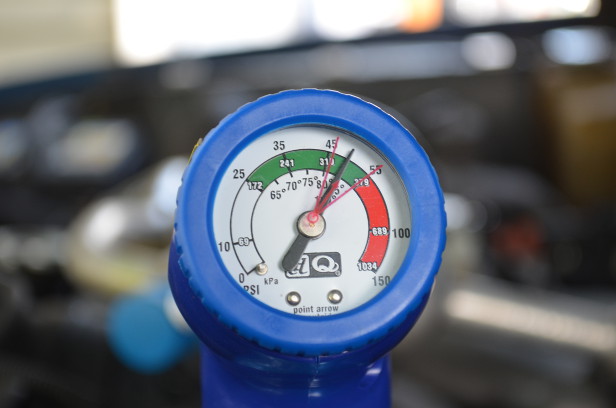How to Recharge Home AC System: Easy Steps
To recharge your home AC system, you should contact a professional heating and cooling technician as only certified professionals are authorized to perform this task under EPA regulations. It is not recommended to attempt recharging the AC yourself, even if you have a home air conditioner recharging kit.
If your home AC unit is not cooling your space as efficiently as before or if you notice signs of low refrigerant such as frost or ice on copper lines, water pooling around the furnace, or a hissing or bubbling noise, it may be time to recharge your AC system.
However, recharging your home AC system is not a DIY task that you can undertake on your own. EPA regulations dictate that only certified professionals should handle the recharge process to ensure safety and compliance. We will explore the process of recharging a home AC system and discuss why it is important to seek professional assistance for this task.

Credit: www.hgtv.com
Step 1: Turn Off The Power
htmlIf you need refrigerant for your air conditioner, you’ll need to contact a professional heating and cooling technician. Under EPA regulations, only a certified professional can recharge your home’s HVAC system. You should never try to recharge the A/C yourself, even if you have a home air conditioner recharging kit.
Here are some of the symptoms of an air conditioner with low refrigerant: takes your AC a long time to cool off, indoor air not blowing cool enough, frost or ice on copper lines, water pooling around the furnace, listen for a hissing or bubbling noise, short cycling, and higher electric bills.
Adding refrigerant to your home AC system is a task that should only be performed by a professional technician. It is not recommended for homeowners to attempt to add Freon themselves. If your AC unit is low on refrigerant, contact a certified technician to properly assess and recharge the system.
Step 2: Completely Thaw
|
Step 2: Completely Thaw
Allow the AC system to completely thaw if it has been running. Thawing is necessary to ensure accurate readings and prevent further damage to the system. When the AC system is frozen, it becomes difficult to measure the refrigerant levels accurately. Thawing can take anywhere from a few hours to a day, depending on the severity of the freezing. You can speed up the thawing process by turning off the AC and using fans to circulate the air. Make sure to check the AC unit periodically to see if the ice has melted before proceeding to the next step. Once the AC system is completely thawed, you can move on to Step 3: Check Refrigerant Levels. |
Step 3: Check The Condensate Drain
| Step 3: Check the Condensate Drain |
| Inspect and clear the condensate drain to ensure proper drainage. |
As part of the process to recharge your home AC system, it’s important to check the condensate drain. The condensate drain is responsible for removing the excess moisture that is produced when the AC unit cools the air. Over time, this drain can become clogged with dirt, debris, or algae, preventing proper drainage.
To inspect and clear the condensate drain, follow these steps:
- Locate the condensate drain pipe. It is typically located near the indoor unit or in the basement.
- Inspect the drain pipe for any signs of blockage, such as standing water or mold.
- If you notice a blockage, use a wet/dry vacuum or a pipe cleaning brush to clear it. Be careful not to damage the pipe.
- Once the blockage is cleared, pour a mixture of equal parts water and vinegar down the drain to prevent future clogs.
- Finally, test the AC system to ensure that the condensate drain is properly draining the excess moisture.
By regularly checking and clearing the condensate drain, you can help maintain the efficiency and performance of your home AC system.
Step 4: Prepare The Refrigerant Tank And Hoses
|
How to Recharge Home AC System Heading: Step 4: Prepare the Refrigerant Tank and Hoses Subheading: Get the refrigerant tank and hoses ready for the recharge process. |
|
To recharge your home AC system, it is important to prepare the refrigerant tank and hoses properly. Here are the steps you need to follow: 1. Make sure the power to the AC unit is turned off. 2. Allow the AC unit to completely thaw before starting the recharge process. 3. Check the condensate drain for any clogs or blockages. 4. Get the refrigerant tank and hoses ready by ensuring they are clean and in good condition. 5. If necessary, purge the hoses to remove any air or contaminants. 6. Once the tank and hoses are prepared, you can start adding refrigerant to the AC system. Remember, it is important to follow the manufacturer’s instructions and safety guidelines when recharging your home AC system. If you are unsure or uncomfortable with the process, it is best to contact a professional heating and cooling technician. Attempting to recharge the AC system yourself without proper knowledge and expertise can lead to further damage and may not be allowed under EPA regulations. |
Step 5: Add Refrigerant
| Step 5: Add Refrigerant |
| – Connect the manifold gauge set and hoses to the AC system. |
| – Open the manual low loss valves and monitor the low side to saturated temperature. |
| – Check the superheat and wet bulb temperature. |
| – Determine the target superheat. |
| – Adjust the actual superheat. |
| – Charge the AC system with the right amount of refrigerant. |
Step 6: Wrap Up
|
If you need refrigerant for your air conditioner, you’ll need to contact a professional heating and cooling technician. Under EPA regulations, only a certified professional can recharge your home’s HVAC system. You should never try to recharge the A/C yourself, even if you have a home air conditioner recharging kit. Here are some of the symptoms of an air conditioner with low refrigerant: takes your AC a long time to cool off, indoor air not blowing cool enough, frost or ice on copper lines, water pooling around the furnace, listen for a hissing or bubbling noise, short cycling, and higher electric bills. To add Freon to your home AC, it is best to watch a tutorial video on YouTube titled “How I Add Refrigerant to an Air Conditioner.” This will provide you with an easy-to-follow step-by-step guide that you can follow to safely recharge your AC unit. Remember to always be cautious and follow all safety guidelines when working with refrigerant. As for how often a home AC unit needs to be recharged, it depends on various factors such as the age and condition of the unit, as well as the usage. On average, a well-maintained AC unit may need to be recharged every 3-5 years. However, it is best to consult a professional technician to assess the specific needs of your AC unit. |
Additional Resources And Tips
Additional Resources and Tips
- Watch video tutorials on how to recharge home AC systems.
- Understand the signs and symptoms of low refrigerant levels.
- Learn about the proper pressure and temperature measurements.
- Consult a professional heating and cooling technician for a safe recharge process.
- Consider using a professional-grade recharge kit for home air conditioning systems.
Frequently Asked Questions For How To Recharge Home Ac System
Can I Recharge My Home Air Conditioner Myself?
No, you cannot recharge your home air conditioner yourself. Only a certified professional can recharge your HVAC system according to EPA regulations. It is not recommended to try to recharge the AC yourself, even with a home air conditioner recharging kit.
Contact a professional heating and cooling technician for assistance.
How Do I Know If My Home Ac Needs Recharged?
To know if your home AC needs to be recharged, look out for these signs: It takes a long time to cool off, indoor air isn’t cool enough, there is frost or ice on the copper lines, water pooling around the furnace, hissing or bubbling noise, short cycling, and higher electric bills.
Recharging is typically needed once every 2-5 years. It’s important to contact a certified professional to handle the recharging process.
How Do I Add Freon To My Home Ac?
To add Freon to your home AC, you should contact a certified heating and cooling technician. It is important to follow EPA regulations and not try to recharge the AC yourself, even with a recharge kit. Only professionals can recharge your HVAC system safely.
How Often Does A Home Ac Unit Need Recharged?
A home AC unit typically needs to be recharged once every two to five years, or even longer. It is important to contact a certified heating and cooling technician to handle the recharging process, as only professionals are allowed to do so under EPA regulations.
Attempting to recharge the AC unit yourself, even with a recharging kit, is not recommended.
Conclusion
Recharging your home AC system is essential for maintaining its efficiency and performance. By following the steps outlined in this blog post, you can ensure that your AC unit operates at its optimal level, providing you with cool and comfortable indoor temperatures.
Remember, it is important to contact a certified HVAC technician to handle the refrigerant recharge, as it requires professional expertise. Regularly recharging your AC unit every two to five years will keep it running smoothly and save you money in the long run.
Don’t neglect the health of your AC system, and enjoy the benefits of a well-functioning home cooling system.







